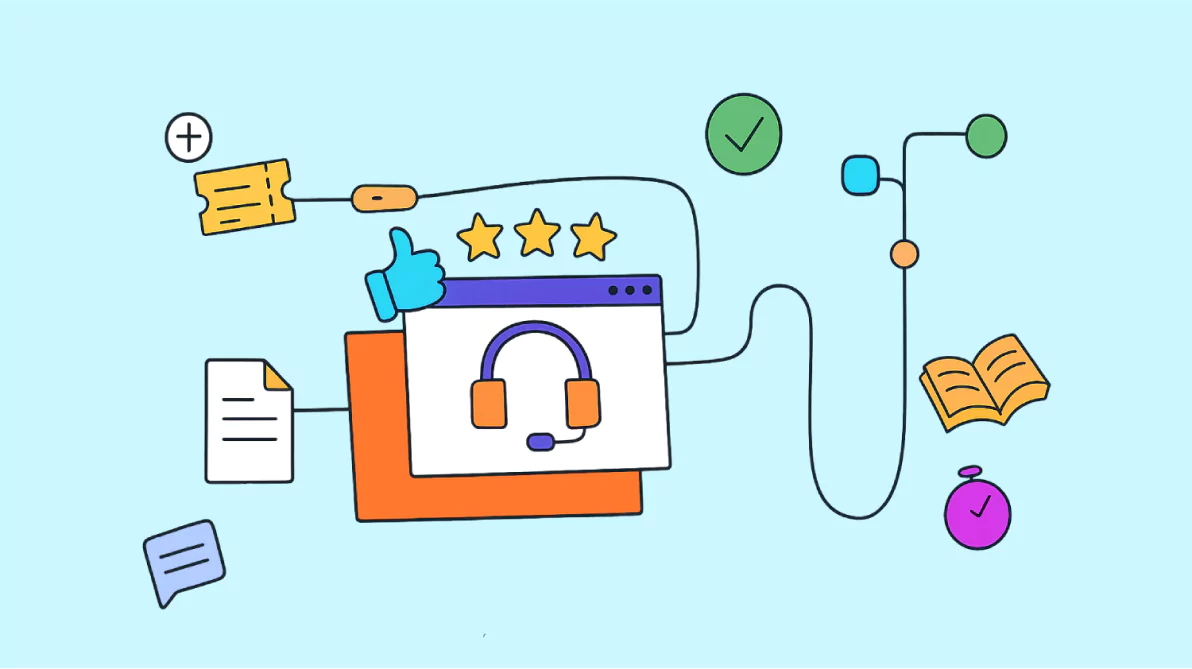Support teams don’t fall behind overnight. It starts with a few missed tickets, delayed responses, or unclear handoffs. Before long, you’re dealing with missed SLAs, frustrated agents, and unhappy customers.
Many organizations start with good intentions but end up with fragmented help desk workflows that lead to delays, confusion, and agent burnout. The root cause? A lack of structure in the ticket management process and the overall support ticket lifecycle.
The solution? A streamlined help desk workflow that brings clarity, speed, and consistency to your operations, enhancing agent productivity and improving the customer support experience.
As you read this guide, take a moment to reflect on your current help desk workflow process. Where do delays occur? What steps feel repetitive or unclear? This guide will help you identify and resolve those pain points, step by step.
What is help desk workflow?
A help desk workflow is a predefined process that outlines the steps for managing and resolving customer support requests efficiently.
It includes ticket creation, categorization, assignment, resolution, and closure, often incorporating automation to streamline operations and improve response times.
A comprehensive help desk workflow example template
Having a predefined help desk workflow template can significantly enhance your customer support operations. It provides a step-by-step guide to managing customer inquiries efficiently.
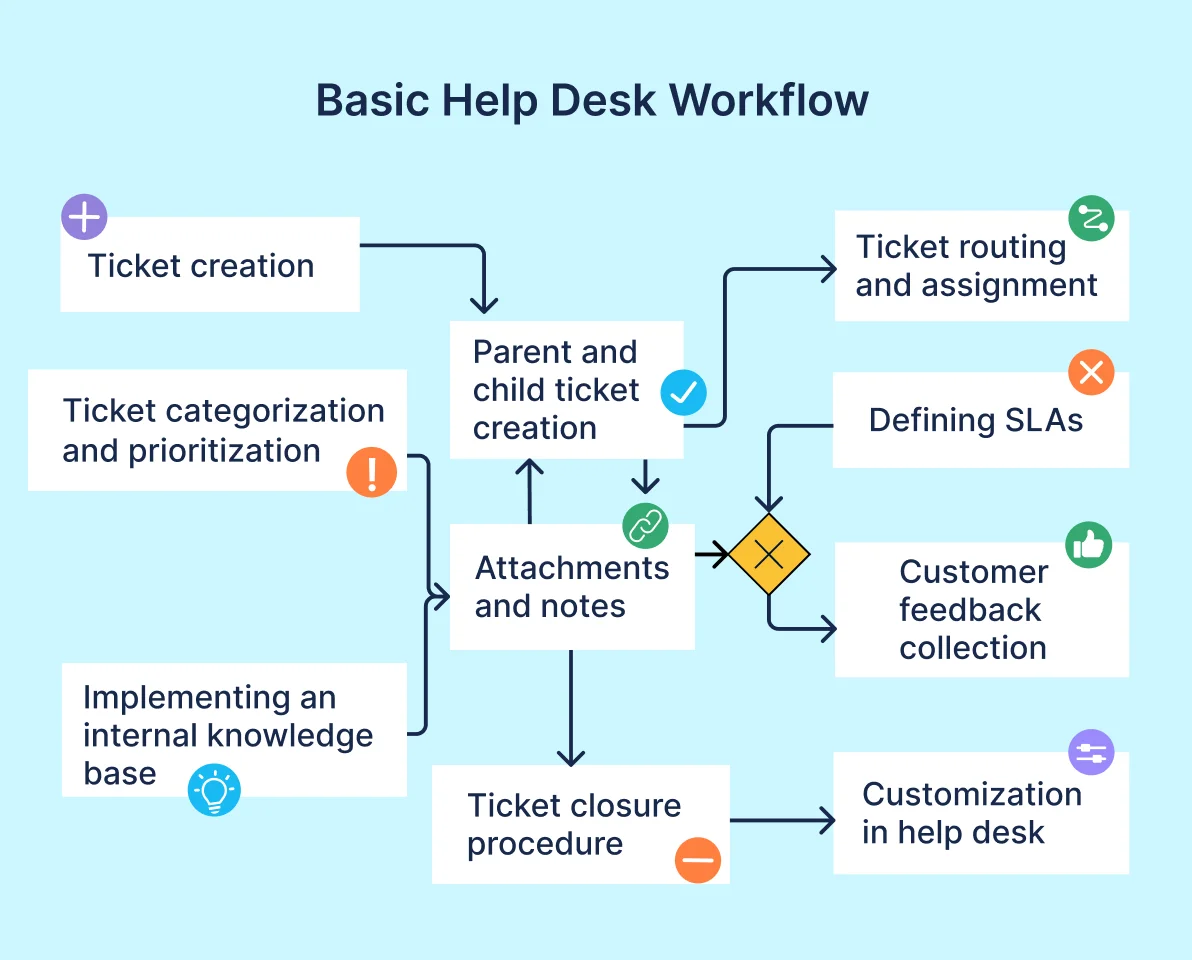
Exploring the help desk workflow processes in depth
Understanding the structure behind a help desk workflow template can transform your support process.
In this section, we’ll break down each stage of the help desk workflow, exploring its purpose and how it streamlines the support process.
By understanding these steps in detail, you can create a help desk workflow that enhances agent productivity and ensures every customer request is handled with care.
The basic help desk workflow processes to include in your help desk workflow diagram include:
1. Ticket creation – A customer submits a support request through email, chat, or a portal.
2. Ticket categorization and prioritization – Classify the ticket based on type, urgency, and impact.
3. Parent and child ticket creation – Link the related issues under a main (parent) ticket for better tracking.
4. Attachments and notes – Add relevant files and internal notes to provide context and streamline resolution.
5. Ticket routing and assignment – Assign the ticket to the right agent or team based on expertise.
6. Establish a ticket escalation structure – Define steps for escalating unresolved issues to higher support levels.
7. Defining SLAs – Set response and resolution time commitments to ensure timely support.
8. Implementing an internal knowledge base – Maintain a centralized resource for agents to quickly find solutions.
9. Ticket closure procedure – Verify resolution, document details, and close the ticket.
10. Customer feedback collection – Gather feedback to improve service quality and support processes.
11. Customization in help desk – Adapting workflows, SLAs, and reports for personalized and efficient support.
12. Automation of help desk processes – Automating tasks like ticket routing and responses to improve efficiency.
1. Ticket creation
Ticket creation is the first help desk workflow step in managing customer inquiries, issues, or service requests in a help desk system.
It involves capturing essential details such as the requester’s information, issue description, priority level, and any supporting documents.
Customers can create a ticket through various channels, such as email, customer self-service portal, live chat, phone call, social media and messaging apps.
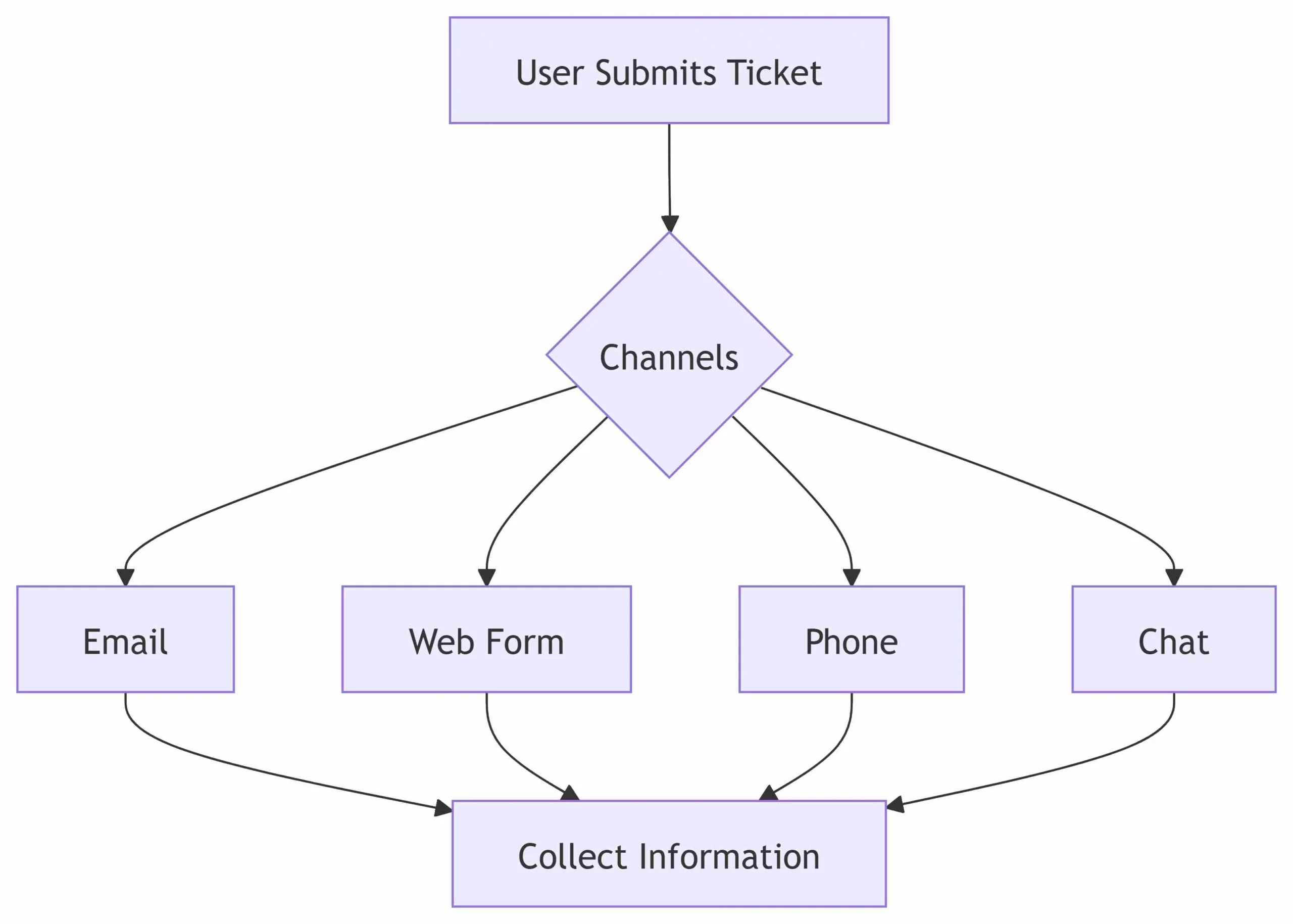
2. Categorizing and prioritizing the tickets
Organizing tickets in a help desk can help agents differentiate between various kinds of tickets and easily search for the ones they are looking for.
- Set ticket priority: Support leads or managers can set various ticket priority levels such as ‘High,’ ‘Low,’ or ‘Normal’ for agents to work on issues based on their urgency. The default priority for any customer support ticket is ‘Normal.’ A red marker is automatically placed to separate high-priority tickets from other tickets.
- Add tags: Agents can add and manage tags to separate important tickets or group similar tickets using the same tags. For instance, if several customers have encountered a similar software issue, such tickets can be labeled as ‘Software bug issue’. Tags also help filter and search for tickets easily.
- Set ticket status: You can set and change the ticket status to tell you about the stage of a ticket’s lifecycle. If your tickets have not been assigned yet, they can be marked as ‘Open’. On the other hand, if they have already been resolved, they can be marked as ‘Closed’.
3. Parent-child ticket creation
The parent-child ticketing feature in help desk systems helps break down complex issues into smaller, manageable sub-tasks for better tracking and resolution.
How it works:
The parent-child ticketing feature in help desk systems helps break down complex issues (parent tickets) into smaller, manageable sub-tasks (child tickets) for better tracking and resolution.
- Parent ticket: Represents the main issue with its overview. It’s usually assigned to a lead agent and tracks overall progress.
- Child tickets: Linked sub-tasks assigned to relevant teams, each progressing independently.
- Weblinks: You can add web links to tickets to reference guides, knowledge base articles, or related resources. This makes it easier to access information, connect related tickets, and speed up resolution.
By combining parent-child relationships and web links together, help desks can streamline issue tracking, improve collaboration, and provide faster support.
4. Attachments and notes
A help desk allows you to attach files while responding to tickets, making it easier to share supporting documents such as Word files, Excel sheets, images, and more.
In the help desk system, public and private notes serve distinct purposes in managing and resolving tickets efficiently.
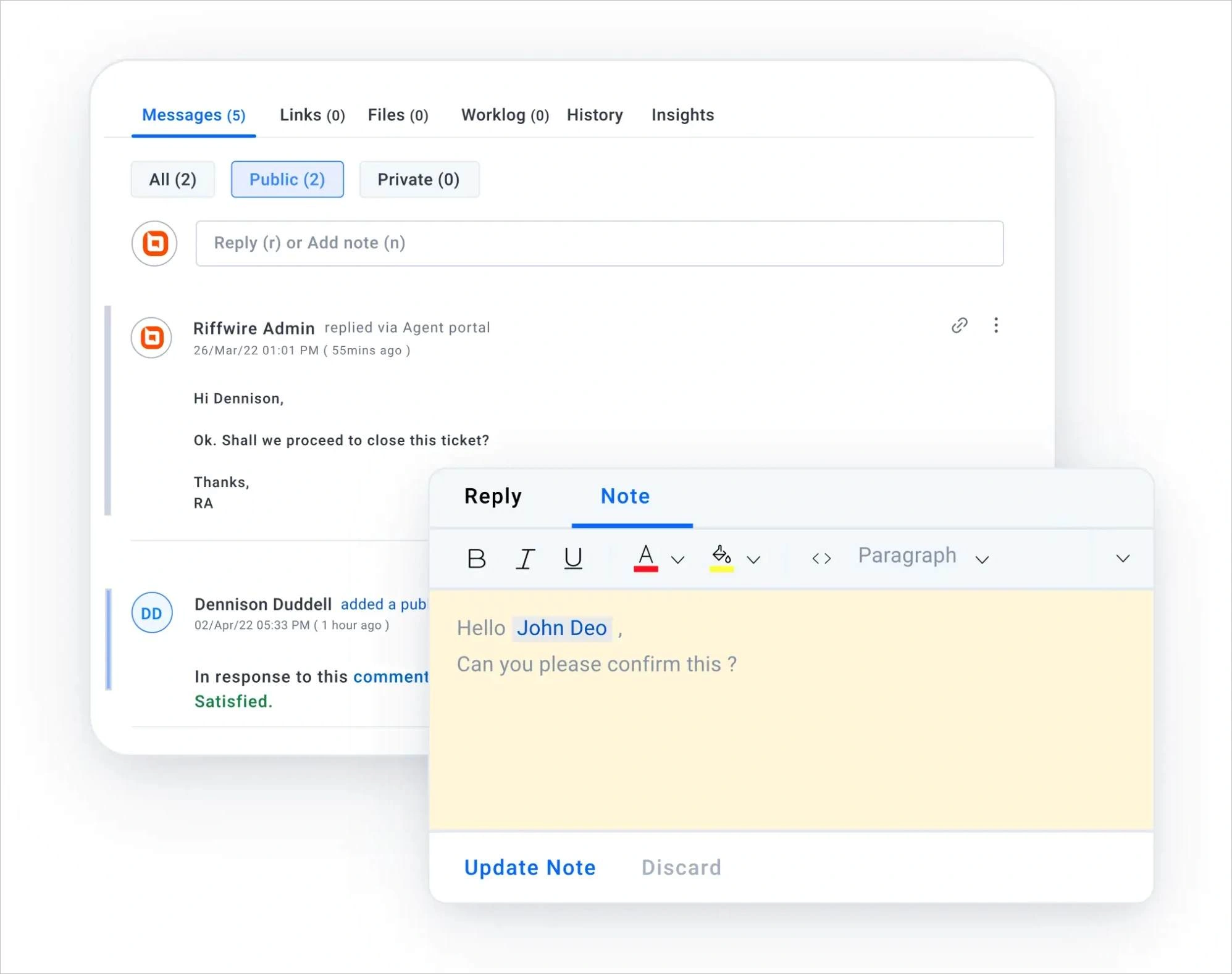
Public notes (External)
Public notes are visible to the customer and provide clear, transparent communication regarding ticket progress. Their primary purposes include:
- Keeping customers informed about issue progress.
- Responding to customer questions.
- Asking for more details when needed.
- Sharing troubleshooting steps or solutions.
- Maintaining a clear record of communication for both parties.
Private notes (Internal)
Private or internal notes that are visible only to support agents and internal teams. These notes help streamline collaboration by providing reminders or guidance on handling specific tickets. Private notes help with:
- Keeping track of internal discussions and troubleshooting steps.
- Assigning tasks to team members.
- Adding useful background details for future reference.
- Escalating issues when needed.
- Recording internal resolutions before updating the customer.
Using both public and private notes helps teams stay organized, communicate clearly, and work together efficiently to resolve issues faster.
5. Ticket routing and assignment
Ticket routing determines where a ticket should go based on its details. Routing can be manual (where an agent assigns the ticket) or automated (using AI, predefined rules, or skill-based routing).
Help desk systems apply various criteria to automatically route tickets effectively:
Routing process
- Issue type: Assigns tickets based on categories like technical support, billing, or account management.
- Priority level: Urgent tickets are directed to high-priority queues for faster resolution.
- Customer category: VIP customers or enterprise clients may have dedicated support teams.
- Workload balancing: Tickets are assigned based on agent availability to prevent overload.
- Location and time zones: Ensures tickets are handled by agents available in the relevant time zone.
Ticket assignment process
Once routed, a ticket is assigned to a specific technician or team responsible for resolution. The ticket assignment methods include:
- Round-robin assignment: Distributes tickets evenly among available agents.
- Skill-based assignment: Assigns tickets to agents with the necessary expertise.
- Priority-based assignment: Critical issues are assigned to senior or specialized agents first.
- Department-based assignment: Tickets are sent to departments such as IT, HR, or finance.
6. Establish a ticket escalation structure
Customer service is a collaborative effort, and when certain agents are unavailable or unable to resolve an issue, others must step in to provide support.
A well-defined ticket escalation structure ensures a smooth and efficient help desk workflow, preventing delays and improving resolution times.
There are two primary types of ticket escalation management:
- Functional escalation: This occurs when a ticket requires expertise beyond the assigned agent’s skills or knowledge.
- Hierarchical escalation: This involves escalating a ticket to higher management for approvals or decision-making.
While escalations are sometimes unavoidable, the goal should be to handle them swiftly and efficiently to maintain seamless support operations.
7. Defining service level agreements (SLAs)
An SLA is a commitment between a service provider and customers that defines the expected level of service, including response and resolution times for support tickets.
Configuring SLAs policies in a help desk ensures accountability, improves efficiency, and enhances customer satisfaction.
Key components of SLAs
- Response time: The maximum time allowed for acknowledging a ticket.
- Resolution time: The expected timeframe for resolving an issue based on priority.
- Priority levels: Categorization of tickets (e.g., Critical, High, Medium, Low) to determine urgency.
- Escalation rules: Steps taken if an SLA is breached, such as notifying managers or reassigning tickets.
- Operating hours: Defines support availability (e.g., 24/7, business hours only).
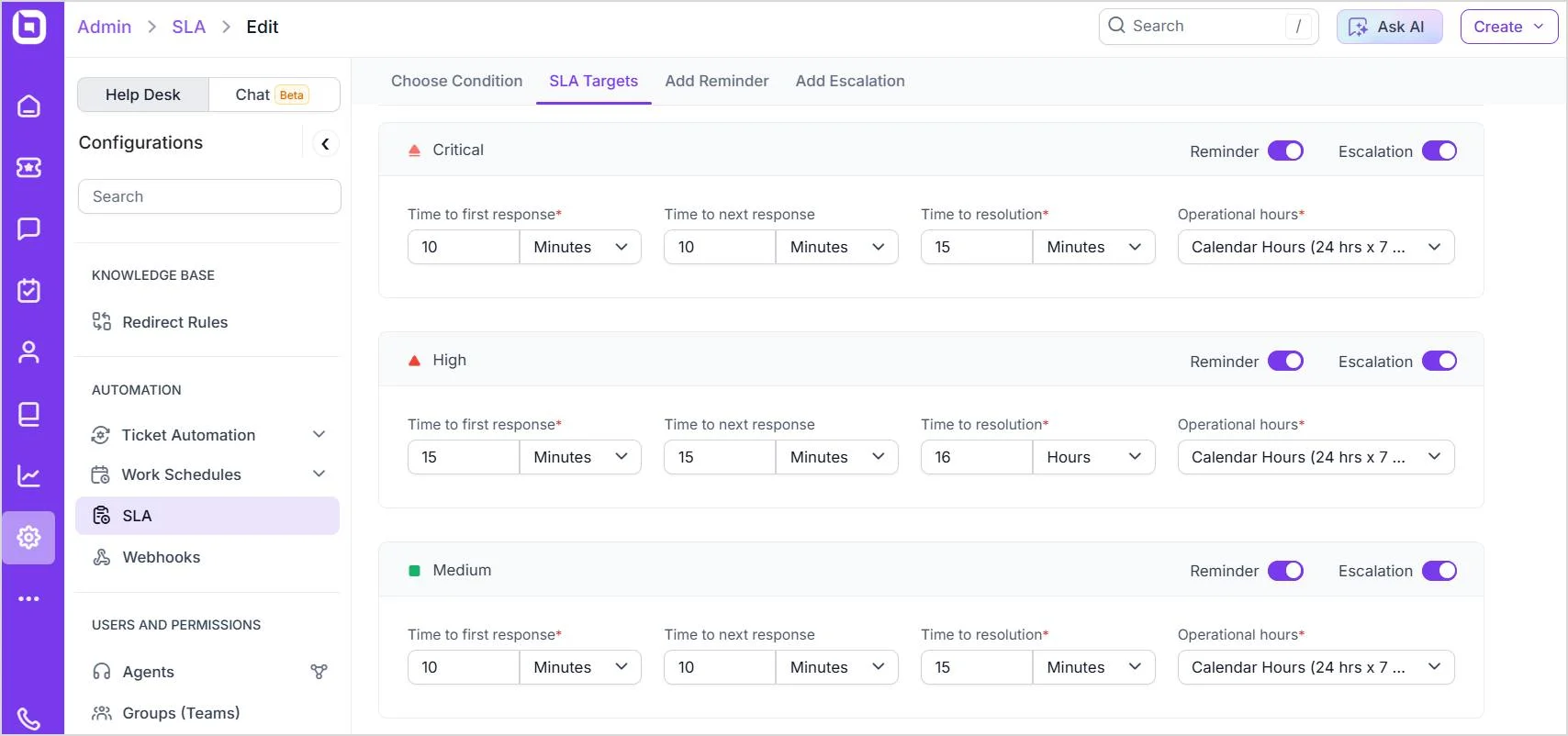
Steps to establish SLAs
- Define support tiers: Set different SLA levels based on customer type (e.g., Standard vs. Premium).
- Set clear response and resolution times: Establish timeframes based on ticket priority.
- Automate SLA tracking: Use help desk software to monitor and enforce SLAs.
- Implement escalation procedures: Ensure unresolved tickets are escalated automatically, and notifications are sent to respective agents.
- Regularly review and optimize: Adjust SLAs based on customer needs and business goals.
8. Implementing an internal knowledge base
A well-organized internal knowledge base helps support teams work more efficiently by providing quick access to important information.
It serves as a central hub for troubleshooting guides, best practices, and procedural documentation, improving overall customer service.
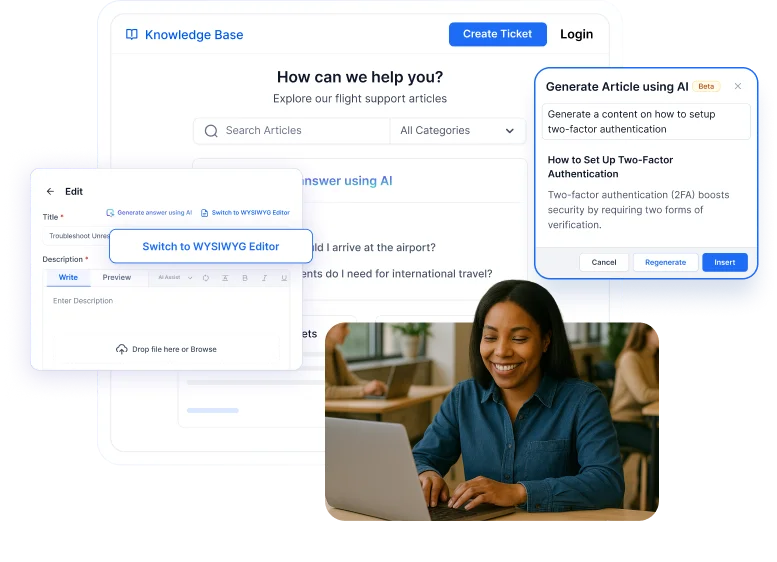
Key benefits:
- Faster issue resolution – Agents can quickly find solutions, reducing research time and resolving tickets faster.
- Standardized support responses – A shared knowledge base ensures all agents provide accurate and consistent answers.
- Efficient agent onboarding – New hires can learn faster with access to training materials, FAQs, and guides, reducing reliance on senior agents.
- Reduced ticket escalations – Agents can handle complex issues independently with readily available expert knowledge.
- Continuous improvement and collaboration – Agents can contribute new insights and update content based on real-time ticket trends, keeping the knowledge base relevant.
By implementing an internal knowledge base, help desk teams can improve efficiency, consistency, and collaboration, leading to better support experiences.
9. Ticket closure procedure
The ticket closure process ensures that issues are fully resolved and documented before a ticket is marked as closed. The typical help desk workflow procedure to close a ticket include:
- Confirm resolution – Verify that the reported issue has been addressed and meets the customer’s needs.
- Communicate with the customer – Inform the customer about the resolution and ask for confirmation, if required.
- Document the solution – Record key details of the resolution for future reference and knowledge sharing.
- Ensure customer satisfaction – If applicable, request feedback to assess the support experience.
- Close the ticket – Mark the ticket as closed if no further action is needed. If the issue persists, reopen or escalate as necessary.
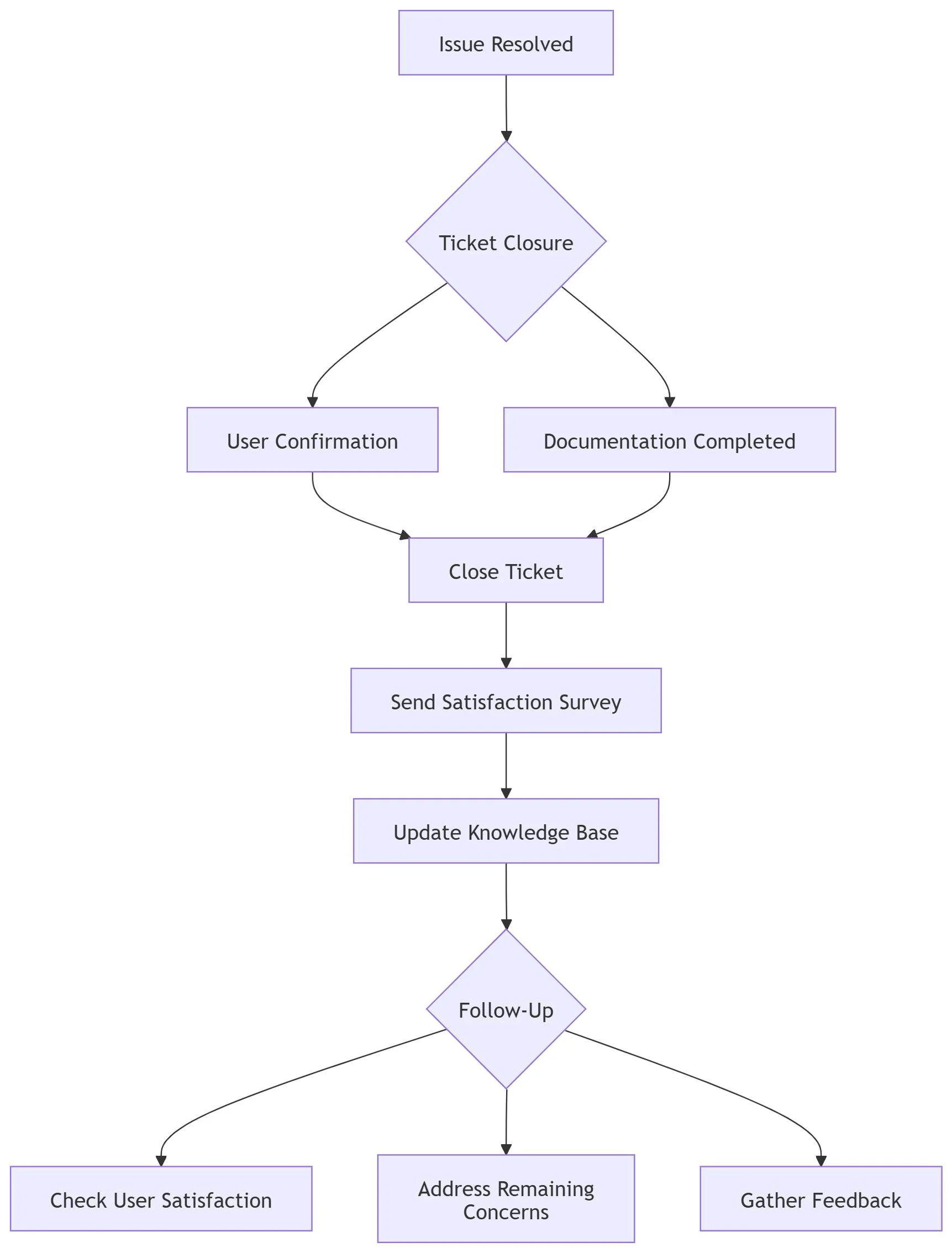
Following a structured help desk workflow closure procedure helps maintain service quality, improves knowledge management, and enhances customer satisfaction.
10. Customer feedback collection
This automated workflow streamlines the collection and processing of customer feedback after ticket resolution. By gathering insights on service quality and customer satisfaction, it helps drive continuous improvement and enhance the customer experience.
Help desk workflow steps to collect feedback:
- Ticket closure: When a ticket is resolved, the system automatically triggers a feedback request.
- Feedback request: A feedback form is sent to the customer, inviting them to share their experience.
- Feedback collection: Responses are recorded and stored in the system for analysis.
- Analysis: Collected feedback is to identify trends, strengths, and areas for improvement.
- Reporting: Insights are compiled into reports for management review.
- Follow-up: If needed, follow-up actions are taken based on customer feedback.
- Continuous improvement: Insights drive enhancements to service processes, ensuring ongoing improvements.
This structured approach ensures valuable customer input is leveraged to refine support operations and elevate customer service standards.
11. Customization in help desk
Customization in a help desk software allows businesses to adapt the support process to their specific needs. It helps improve efficiency, enhance customer experience, and align help desk workflows with organizational goals.
Key areas of customization:
- Ticket fields and forms – Modify ticket fields to collect relevant information based on issue type.
- Automation rules – Set up triggers and workflows to automate repetitive tasks like ticket assignment and status updates.
- Service Level Agreements (SLAs) – Define response and resolution time policies based on priority and customer requirements.
- Escalation processes – Configure escalation rules to ensure timely resolution of high-priority issues.
- Custom reports and dashboards – Generate insights tailored to business needs for better decision-making.
- Branding and UI customization – Personalize the help desk portal with company logos, colors, and messaging.
With effective help desk customization, businesses can create a streamlined, user-friendly, and highly efficient support system that meets their unique requirements.
12. Automation of help desk flow processes
Automation in a help desk improves efficiency by handling repetitive tasks, reducing manual effort, and speeding up ticket resolution. An automated help desk workflow ensures a seamless support process while allowing agents to focus on more complex issues.
Key areas of helpdesk workflow automation:
- Ticket assignment – Automatically route tickets to the right agent or team based on category, priority, or workload.
- Canned responses – Use predefined replies for common customer inquiries to save time and maintain consistency.
- SLA management – Track response and resolution times, sending alerts for SLA breaches.
- Escalation rules – Auto-escalate unresolved tickets to higher support levels when needed.
- Workflow automation – Automate actions like status updates, notifications, and follow-ups.
- Self-service and chatbots – Provide instant answers through knowledge base suggestions and AI-powered chatbots.
By automating key processes, help desks improve response times, enhance customer experience, and optimize agent productivity.
Why is an optimized help desk ticket workflow important?
Many businesses struggle with inefficient help desk workflows, often relying on manual processes that are time-consuming and prone to errors. Without an effective support workflow optimization, your customer service team may experience:
- Delayed response times due to inefficient ticket handling.
- High agent workload caused by a lack of task automation.
- Poor customer experiences stemming from inconsistent support quality.
- Difficulty tracking ticket progress, leading to unresolved customer issues.
- Lack of accountability, resulting in repetitive problems.
To streamline customer support, businesses must define and improve their helpdesk workflows, ensuring that every step is clearly documented and executed efficiently.
Master your workflow, master your support!
Well-structured and clear help desk ticket workflow processes from ticket creation to resolution help agents work faster, reduce response times, and improve customer satisfaction.
With the right tools, such as a knowledge base, automation, AI and SLAs, your team can handle inquiries smoothly and deliver consistent service.
A help desk is not just about solving tickets. It is about making support simple and effective for both customers and agents.
Transform every customer interaction into an opportunity to deliver exceptional support with BoldDesk. Our intuitive help desk solution streamlines workflows, enabling faster resolutions and seamless customer experiences. Have any questions? We’re here to help, so reach out to us anytime!
For more ideas, suggestions or remarks on help desk workflow templates, leave a comment below.
Related articles
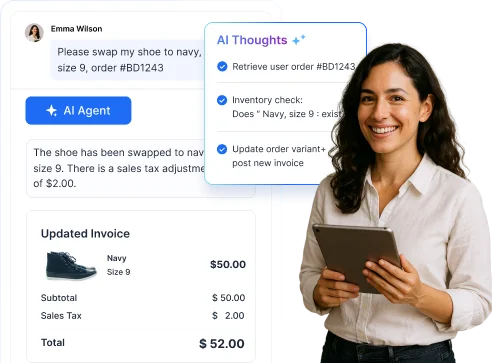


















 Email Ticketing System
Email Ticketing System Shared Inbox Software
Shared Inbox Software Multi Brand Help Desk
Multi Brand Help Desk Internal Help Desk Software
Internal Help Desk Software Trouble Ticketing Software
Trouble Ticketing Software Mobile Help Desk
Mobile Help Desk 










